(Happy Birthday Herbert the Duck!!)
John would have just stayed in Waterford but I was keen to go to Kilkenny and see the castle
. On the understanding that we would be back by 3pm I won. The forecast had suggested the weather would be better inland and the only bad weather we had was on the drive north.
The castle at Kilkenny is furnished in the period of the late 1880's. When it went into public hands a decision had to be made as to the period to restore it to and this was the decision. There was a lot of information about the furnishings of the time which may have influenced the decision. No photos were allowed in the building.
The castle was built for William Marshall, the Earl of Pembroke in the early 1200’s. The Butler family then owned it for 600 years before it was given to the people of Kilkenny in1967 for 50 pound. In the 19th century significant rebuilding was done to the castle.
The entrance way had a mesh floor so we could see the foundations of older parts of the building. This also showed us how wide the original walls were
.
John liked the idea of a withdrawing room (where ladies went to leave the gentleman to their port and cigars) which was the next area we went into. It had remnants of the hand painted Chinese wallpaper with glass panels to protect them. Both it and the neighbouring dining room had 19th century fireplaces. In fact just about every room we went into had a fireplace.
We went up the Grand Staircase, with lovely mahogany, to the tapestry room. In the 17th century, the room had embossed gilded leather hangings which were replaced by tapestries in the 18th century. These were off site for conservation so we could only see photos of them.
On the first floor were three of the most furnished rooms. They had been State rooms in the 16th century but an Ante room, Library and Drawing room in the 19th century. A remnant of the original wall coverings was found behind a skirting board and the French silk poplin was especially woven in Lyons to match
. The curtains are also silk and the pelmets are a mix of original and matching reproductions. The gilding in the rooms is 24 carat gold. The new carpet was made by the same firm that had made the original.
The room steward told us about the love seat. A courting couple could sit back to back and the side seats were for the chaperones. There was a wooden cabinet which was used for making tea. The strangest thing was an item that had a sort of glass orb at the top. The steward said that photos would be taken from a balloon and then if 2 were put in the machine and adjusted you would get a 3D effect that would match the original.
There were 2 bedrooms on display. One was done in Chinese style which we were told was the fashion of the day. The other had a side table and couch in bay windows as well as a 4 poster bed. The room steward reminded us that the lord and lady could ring down for breakfast to be served in their room so hence the table
. This would be much easier though than having to cart coal up to the fireplaces. This bedroom had a small bathroom nearby with a 'water closet’ that dated to 1904.
There were paintings in most rooms, often of royalty or of the family that lived here. Many of the family portraits were purchased by the Irish government from the family collection in 1995. In one room there was a portrait of Charles I’s children. The room steward was pointing out to an American group that the children were the future Charles II, James I and Mary, the mother of the following monarch, William of Orange. He told them New York was named after the Duke of York and Maryland after Mary.
However, the Picture Gallery wing was spectacular. We went up the Moorish staircase and turned the corner into this huge room. It had a pitched roof with glazing running the length of the room, carved stone pieces on each side and a a marble fireplace in the middle.
We had a cuppa in the old kitchen in the basement which is now a tearoom
. The young woman running it was very friendly. When she heard we were from NZ, she said that is where her boyfriend is. Not that he knows it yet – but Riche Mccaw has a huge fan here although she may be a bit fickle as she had been a fan of Dan Carter until recently.
The exit took us past the Rose Gardens. I went down to get a better photo of the castle and the wonderful aroma hit me as I went down the stairs.
We did a couple of caches near the 2 of the churches. One was memorable. It was an earthcache and for it we had to take a picture of a fossil on a limestone seat hence showing it was not true marble. Just as we were going to the seat a man came and sat on it. We waited for him to go but instead 2 others from what seemed to be a tour group joined him. While John hid, I went over with the camera and said ‘excuse me but I have been told you can see a fossil on this seat’. They all laughed as the man said he was not that old
. However, they were then interested and helped look for the fossils so I got the photo.
We drove back to Waterford via New Ross so we did half the trip on secondary roads. There was a cache on the way at a castle ruin. Grennan castle was built by Thomas Fitzanthoney for his own defence in the 12th century but when Cromwell called past in 1650, it only lasted two days. The garrison defending the castle marched out, leaving behind all their weapons and promising never again to oppose English rule.
We tried to find one at a nearby church but gave up as reception was very poor. Clodaigh Church was built in 1700 or rather excavated in a deep hollow among the trees and was originally a thatched structure with a clay floor. Nearby was a small hut which was used as a hedge school. The local people were lucky with their choice of a hidden site, because, in 1798 when Yeomen were destroying churches, they failed to discover Clodaigh
. In 1800 the church was re-roofed and raised above the level of the rock for the first time after being completely hidden for a century. It seemed appropriate that we couldn’t find the cache.
What we did find next was a lovely village, Inistioge. We stopped by the river to take photos then had lunch in the river café, which was in the Old Schoolhouse. We had spotted an angler nearby so tried not to disturb him but when we were in the cafe a bus load of tourists arrived. It is clearly a notable pretty village.
We were back in Waterford at about 3pm so called in to see if Tony was home. He wasn’t so we went into town and bought a piece of crystal (for my birthday) then went to the Tower hotel for a drink and use of their wifi. When we got home there were massages from Tony on the phone. They invited us for tea but we wanted to use up various bits in the fridge so went around to them after tea at 7.30pm
We have seen a number of interesting things on the roads. A number of trotters with sulkies, lots of tractors, runners, hay trucks, and men in cars taking dogs for walks. However on the way we saw a group of 16 cyclists taking about 50 pedigree spaniels for a run!!
It turned out that Tony and Nuala had been to a family funeral and also it was Harry’s birthday. We had a drink with them and saw their photos from NZ. They put them on a cd for us to show to Liz and Jennifer when we get back to NZ. John had not felt well and had slept for an hour but was fine by now. However, we made sure we left before 10pm because they had work and we had to pack up.
Old fossils in Kilkenny
Tuesday, September 14, 2010
 Ballymacaw, Munster, Ireland
Ballymacaw, Munster, Ireland
Other Entries
-
103Fast cars, a Palace and treacle
Aug 2916 days prior London, United Kingdomphoto_camera6videocam 0comment 0
London, United Kingdomphoto_camera6videocam 0comment 0 -
104Cruising down the River
Aug 3015 days prior London, United Kingdomphoto_camera11videocam 0comment 0
London, United Kingdomphoto_camera11videocam 0comment 0 -
105There'll be blue birds over......
Aug 3114 days prior London, United Kingdomphoto_camera22videocam 0comment 0
London, United Kingdomphoto_camera22videocam 0comment 0 -
106To Ireland begorrah...
Sep 0113 days prior Ballymacaw, Irelandphoto_camera2videocam 0comment 0
Ballymacaw, Irelandphoto_camera2videocam 0comment 0 -
107A fox on the run
Sep 0212 days prior Ballymacaw, Irelandphoto_camera3videocam 0comment 0
Ballymacaw, Irelandphoto_camera3videocam 0comment 0 -
108Cuisin' the Copper Coast
Sep 0311 days prior Ballymacaw, Irelandphoto_camera6videocam 0comment 0
Ballymacaw, Irelandphoto_camera6videocam 0comment 0 -
109Quick note to everyone re earthquake
Sep 0410 days prior Ballymacaw, Irelandphoto_camera0videocam 0comment 1
Ballymacaw, Irelandphoto_camera0videocam 0comment 1 -
110A shaky start
Sep 0410 days prior Ballymacaw, Irelandphoto_camera6videocam 0comment 0
Ballymacaw, Irelandphoto_camera6videocam 0comment 0 -
111From Famine ships to hurling
Sep 059 days prior Ballymacaw, Irelandphoto_camera4videocam 0comment 0
Ballymacaw, Irelandphoto_camera4videocam 0comment 0 -
112By Hook or by Crooke
Sep 068 days prior Ballymacaw, Irelandphoto_camera14videocam 0comment 0
Ballymacaw, Irelandphoto_camera14videocam 0comment 0 -
113It's a long way...
Sep 077 days prior Ballymacaw, Irelandphoto_camera17videocam 0comment 0
Ballymacaw, Irelandphoto_camera17videocam 0comment 0 -
114Wandering about Wexford
Sep 086 days prior Ballymacaw, Irelandphoto_camera15videocam 0comment 0
Ballymacaw, Irelandphoto_camera15videocam 0comment 0 -
115The Rain of Kerry
Sep 095 days prior Ballymacaw, Irelandphoto_camera5videocam 0comment 0
Ballymacaw, Irelandphoto_camera5videocam 0comment 0 -
116Nothin' much doin'
Sep 104 days prior Ballymacaw, Irelandphoto_camera3videocam 0comment 0
Ballymacaw, Irelandphoto_camera3videocam 0comment 0 -
117A load of Blarney
Sep 113 days prior Ballymacaw, Irelandphoto_camera15videocam 0comment 0
Ballymacaw, Irelandphoto_camera15videocam 0comment 0 -
118The products of Waterford
Sep 122 days prior Ballymacaw, Irelandphoto_camera13videocam 0comment 0
Ballymacaw, Irelandphoto_camera13videocam 0comment 0 -
119Doin' Dublin
Sep 131 day prior Ballymacaw, Irelandphoto_camera14videocam 0comment 1
Ballymacaw, Irelandphoto_camera14videocam 0comment 1 -
120Old fossils in Kilkenny
Sep 14 Ballymacaw, Irelandphoto_camera17videocam 0comment 0
Ballymacaw, Irelandphoto_camera17videocam 0comment 0 -
121Ciao Ballymacaw
Sep 151 day later Rome, Italyphoto_camera2videocam 0comment 0
Rome, Italyphoto_camera2videocam 0comment 0 -
122Cheers Bros
Sep 162 days later Rome, Italyphoto_camera12videocam 0comment 0
Rome, Italyphoto_camera12videocam 0comment 0 -
123Roamin' Rome
Sep 173 days later Rome, Italyphoto_camera8videocam 0comment 0
Rome, Italyphoto_camera8videocam 0comment 0 -
124All aboard please!!
Sep 184 days later Civitavecchia, Italyphoto_camera8videocam 0comment 0
Civitavecchia, Italyphoto_camera8videocam 0comment 0 -
125Birthday on the Med
Sep 195 days later Livorno, Italyphoto_camera38videocam 0comment 0
Livorno, Italyphoto_camera38videocam 0comment 0 -
126A lucky break at Monte Carlo...
Sep 206 days later Monte-Carlo, Monacophoto_camera34videocam 0comment 3
Monte-Carlo, Monacophoto_camera34videocam 0comment 3 -
127The rain in Spain...
Sep 217 days later Barcelona, Spain and Canary Islandsphoto_camera22videocam 0comment 0
Barcelona, Spain and Canary Islandsphoto_camera22videocam 0comment 0 -
128Getting into Gaudi
Sep 228 days later Barcelona, Spain and Canary Islandsphoto_camera6videocam 0comment 0
Barcelona, Spain and Canary Islandsphoto_camera6videocam 0comment 0 -
129Meandering through Mallorca
Sep 239 days later Mallorca, Spain and Canary Islandsphoto_camera5videocam 0comment 0
Mallorca, Spain and Canary Islandsphoto_camera5videocam 0comment 0 -
130A lazy day at sea
Sep 2410 days later Palma de Mallorca, Spain and Canary Islandsphoto_camera0videocam 0comment 0
Palma de Mallorca, Spain and Canary Islandsphoto_camera0videocam 0comment 0 -
131Out of Africa
Sep 2511 days later La Goulette, Tunisiaphoto_camera9videocam 0comment 0
La Goulette, Tunisiaphoto_camera9videocam 0comment 0 -
132Lazy Sunday in Sicily
Sep 2612 days later Trapani, Italyphoto_camera7videocam 0comment 0
Trapani, Italyphoto_camera7videocam 0comment 0 -
133Amazing Amalfi
Sep 2713 days later Naples, Italyphoto_camera7videocam 0comment 0
Naples, Italyphoto_camera7videocam 0comment 0 -
134Rendezvous with Irene and Raewyn
Sep 2814 days later Civitavecchia, Italyphoto_camera1videocam 0comment 1
Civitavecchia, Italyphoto_camera1videocam 0comment 1 -
135All at sea
Sep 2915 days later Civitavecchia, Italyphoto_camera3videocam 0comment 1
Civitavecchia, Italyphoto_camera3videocam 0comment 1 -
136Hitting the Wall in Dubrovnik
Sep 3016 days later Dubrovnik, Croatiaphoto_camera10videocam 0comment 1
Dubrovnik, Croatiaphoto_camera10videocam 0comment 1 -
137Checking out Corfu
Oct 0117 days later Corfu Town, Greecephoto_camera6videocam 0comment 0
Corfu Town, Greecephoto_camera6videocam 0comment 0 -
138Lord of the Rings
Oct 0218 days later Katákolon, Greecephoto_camera5videocam 0comment 1
Katákolon, Greecephoto_camera5videocam 0comment 1

 Ballymacaw, Munster, Ireland
Ballymacaw, Munster, Ireland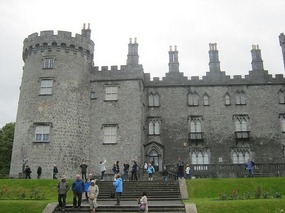
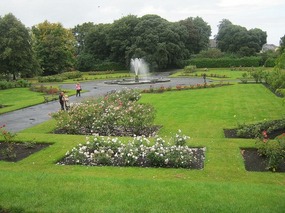
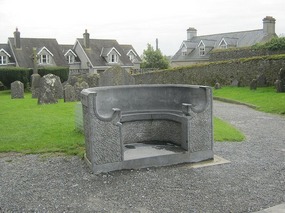
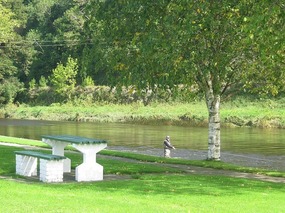
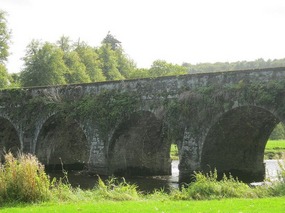
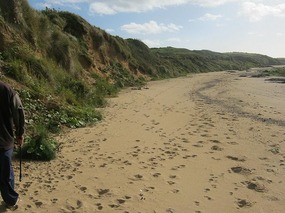
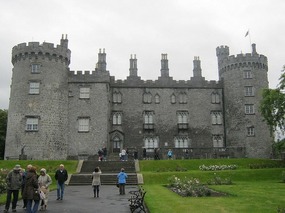








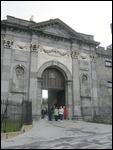
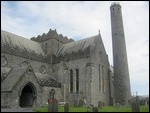
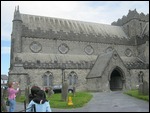
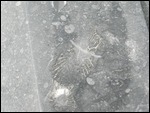
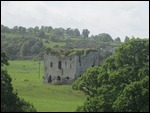
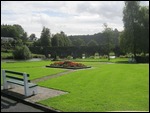
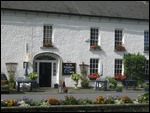
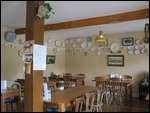
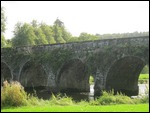
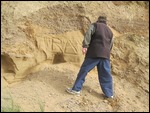
2025-05-22